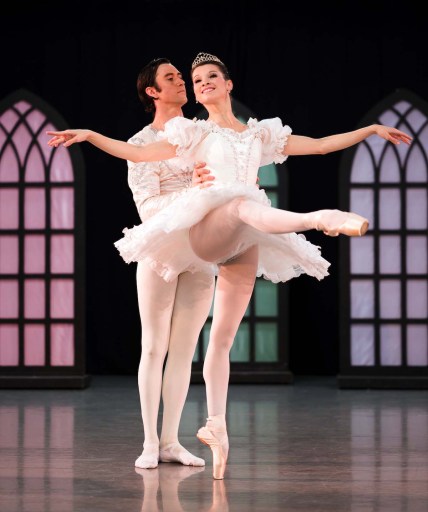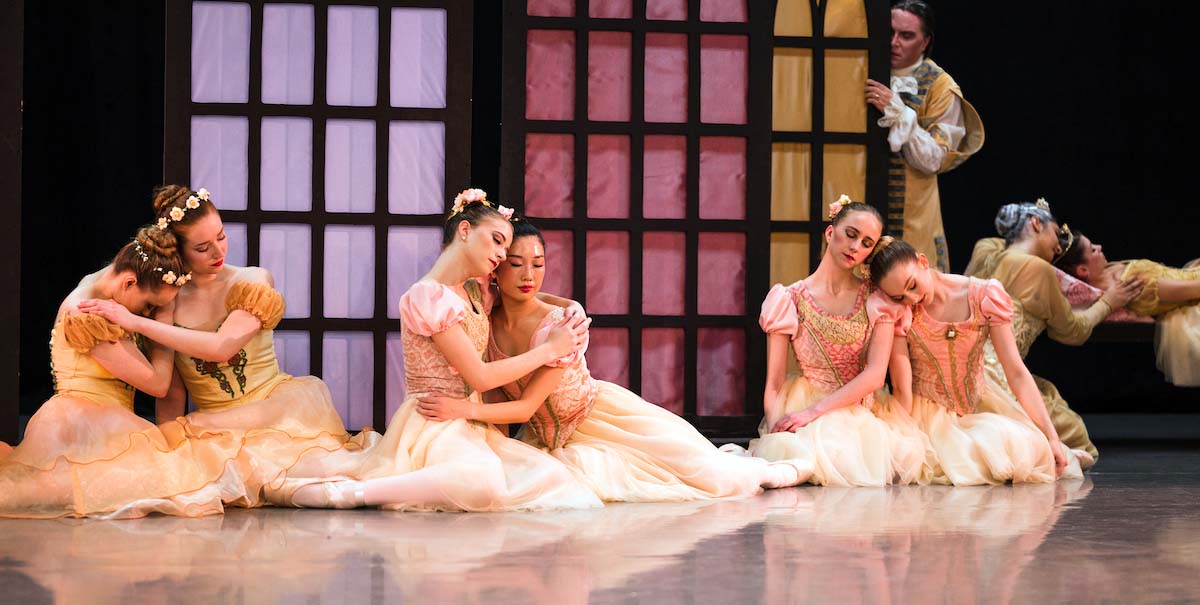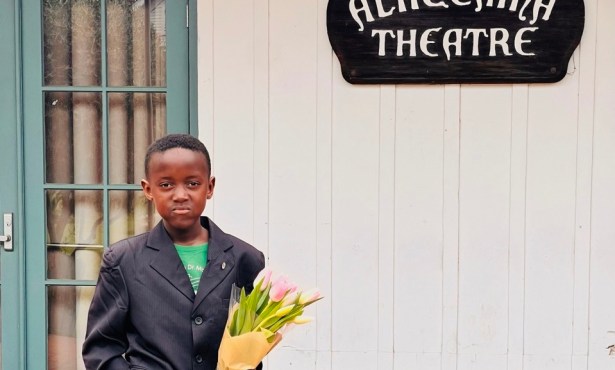State Street Ballet’s ‘Sleeping Beauty’
A Sleeping Ballet Project Awakens in Santa Barbara

From Sleeping Beauty to Rip Van Winkle, fairy tales have long prized the notion of a gap in time. These stories rest on the premise of a withdrawal from consciousness that’s not death but that goes far beyond the nocturnal sleep habits we all share and reaches into the realms of magic and myth.
In March 2020, State Street Ballet was poised to present a reworking of the canonical Tchaikovsky ballet Sleeping Beauty at The Granada Theatre. Everyone, including not only the dancers but also the three women who had choreographed the new version, and the woman who had designed and built the show’s giant dragon puppet, was in a state of high anticipation. An out-of-town performance in Fresno had gone well.

Then COVID hit. Just like that, the company had to postpone its projected premiere for two long years. The extraordinary collective effort of choreographers Megan Philipp, Marina Fliagina, and Cecily MacDougall, as well as the fantastic dragon created by Christina McCarthy — all of it went to sleep.
And yet, talking to Cecily MacDougall about it today, she has nothing but good things to say about what that uninvited hiatus has done for the production. “These two years have allowed the project to evolve,” MacDougall told me. “State Street’s Sleeping Beauty is bigger and better now than it was in 2020. We have had many more rehearsals, we have added live music played by the Opera San Luis Obispo Grand Orchestra, and we’ve had an extraordinary opportunity to mature as a company.” At the same time, as in all these fairy tales involving sleep, the world has changed.
This edition of ON Culture was originally emailed to subscribers on April 12, 2024. To receive Leslie Dinaberg’s arts newsletter in your inbox on Fridays, sign up at independent.com/newsletters.
In its original form, Sleeping Beauty leaves open a question that needs answering — the issue of Aurora’s consent. Sure, it’s convenient that her true love happens to be a heroic prince, and it’s great that he rescues her from a state of indefinite biological suspension, but how can we endorse a first move made on an unconscious woman? “We reimagined the storyline,” MacDougall said, “We felt it had to convey a positive message to young women, and for that to happen, Aurora needed to consent to the prince’s advances.”
Now, instead of a sneaky kiss from out of nowhere, we see that the two have been talking. The prince was at Aurora’s 16th birthday party on the day that she pricked her finger and fell into the big sleep that defines her as a character. She knows and cares for him before he awakens her in this version.
And that’s not the only change. In the traditional Petipa version, the ballet’s final act brings on a host of woodland creatures and other fairy-tale animals through stories told by the prince’s courtly wedding guests. Masked aristocrats gather to impress each other with their skills as dancers and storytellers.

For the team behind State Street’s production, this seemed overly complicated and un-American. The prince approached Aurora’s castle through the woods; why couldn’t he have met actual animals along the way? This shift allows the dancers to step more directly into these archetypes.
It’s worth mentioning that choreographer Marina Fliagina and her husband, dancer Sergei Domrachev, share their Russian heritage with this masterpiece of the ballet repertoire. State Street Ballet newcomer Zhan Mishel Panchuk, who will dance several roles, including Puss in Boots, is from Kyiv, Ukraine. See how they work together this weekend at the Granada and celebrate a time when Russia embraced a culture shared with France and the world.
For tickets and information, visit statestreetballet.com or call the Granada box office at (805) 899-2222.
Support the Santa Barbara Independent through a long-term or a single contribution.




You must be logged in to post a comment.